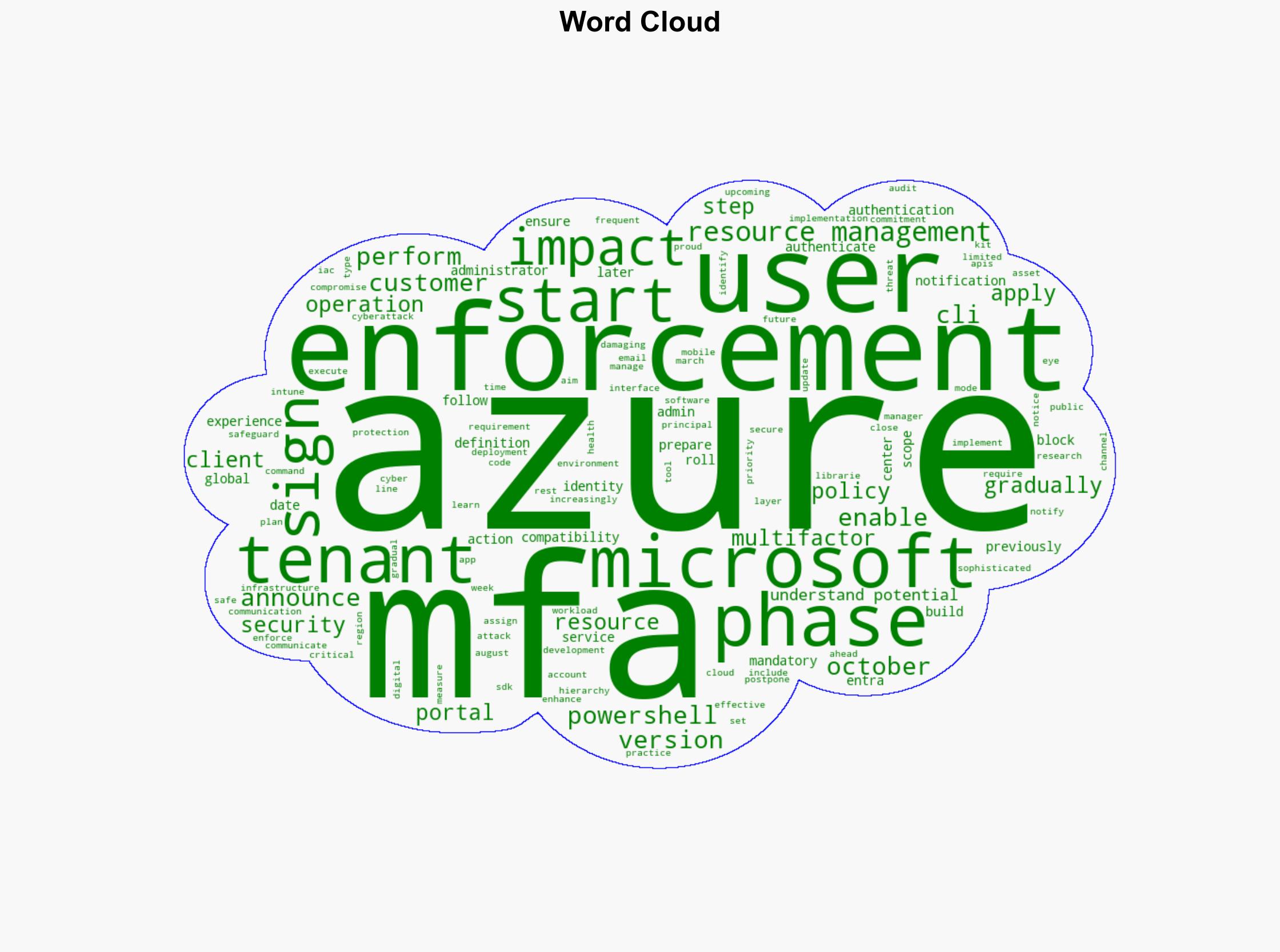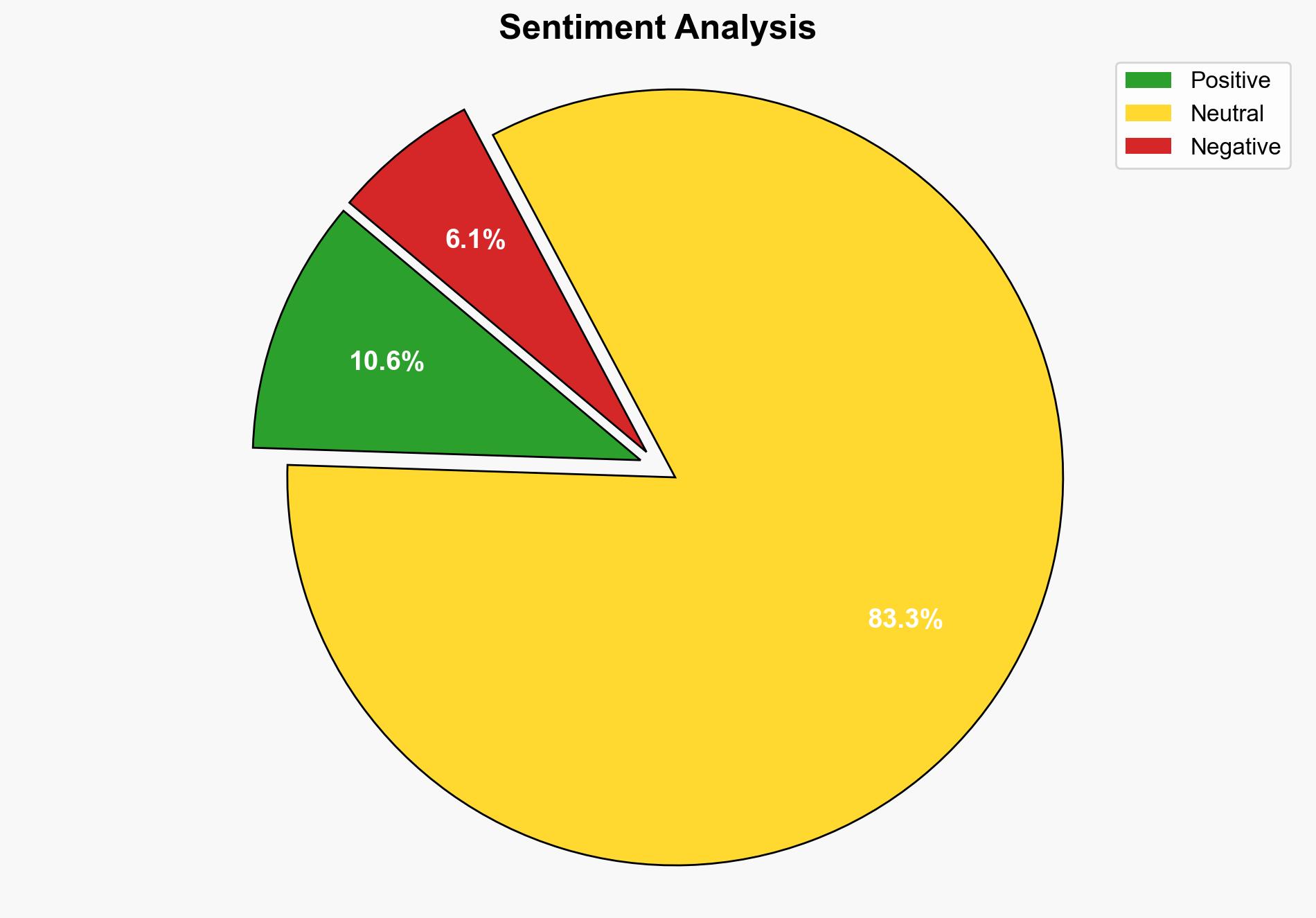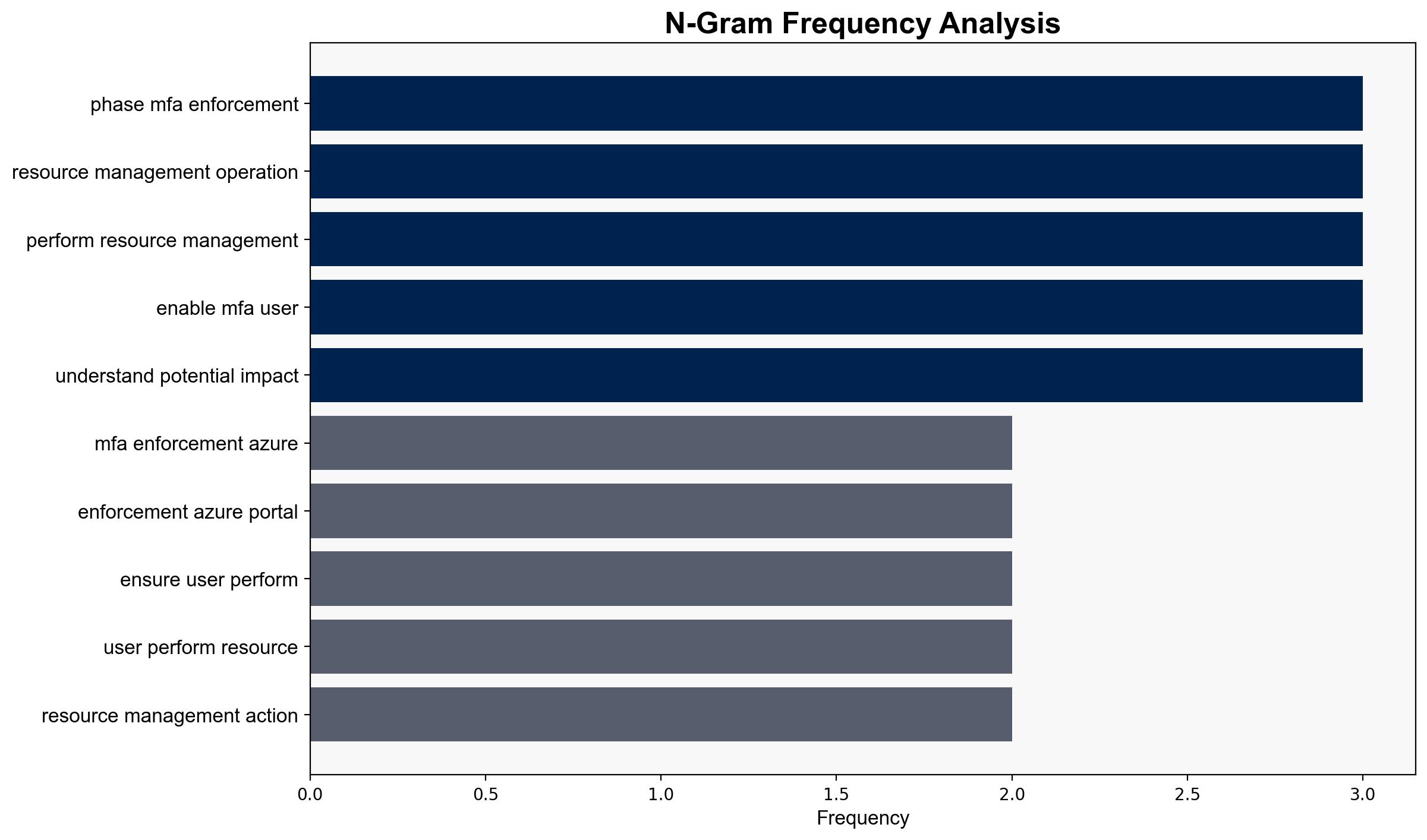Azure mandatory multifactor authentication Phase 2 starting in October 2025 – Microsoft.com
Published on: 2025-09-05
Intelligence Report: Azure mandatory multifactor authentication Phase 2 starting in October 2025 – Microsoft.com
1. BLUF (Bottom Line Up Front)
The strategic judgment is that Microsoft’s phased enforcement of mandatory multifactor authentication (MFA) for Azure services is primarily a proactive measure to enhance cybersecurity and protect digital assets against increasingly sophisticated cyber threats. The most supported hypothesis is that this initiative is part of a broader strategy to mitigate risks associated with cyberattacks. Confidence level: High. Recommended action: Organizations using Azure should prioritize compliance with MFA requirements to safeguard their operations and data.
2. Competing Hypotheses
1. **Proactive Cybersecurity Enhancement**: Microsoft is implementing mandatory MFA as a strategic move to strengthen security across its Azure platform, anticipating future cyber threats and aligning with industry best practices.
2. **Market Differentiation Strategy**: The enforcement of MFA is a strategic decision aimed at differentiating Azure from competitors by emphasizing superior security features, potentially attracting security-conscious customers.
Using the Analysis of Competing Hypotheses (ACH) 2.0, the first hypothesis is better supported due to the explicit focus on cybersecurity threats and Microsoft’s historical emphasis on security improvements.
3. Key Assumptions and Red Flags
– **Assumptions**: It is assumed that the increase in cyber threats is a primary driver for the MFA enforcement. Additionally, it is assumed that all Azure users will comply with the new requirements without significant resistance.
– **Red Flags**: The gradual enforcement approach may indicate potential challenges in implementation or user resistance. The lack of detailed information on how non-compliance will be handled is a potential blind spot.
4. Implications and Strategic Risks
The mandatory MFA enforcement could lead to improved cybersecurity resilience for Azure users, reducing the risk of account compromises. However, there is a risk of operational disruptions during the transition period, especially for organizations unprepared for the change. Economically, this move could increase Azure’s attractiveness to security-focused clients, but it may also impose additional costs on users needing to upgrade their systems. Geopolitically, enhanced security measures could deter state-sponsored cyberattacks targeting Azure-hosted services.
5. Recommendations and Outlook
- Organizations should conduct a thorough assessment of their current authentication processes and ensure readiness for MFA implementation by October 2025.
- Develop a communication plan to inform and train users on the new MFA requirements to minimize disruptions.
- Scenario-based projections:
- Best Case: Smooth transition with enhanced security and minimal operational impact.
- Worst Case: Significant operational disruptions and resistance from users, leading to security vulnerabilities.
- Most Likely: Gradual adaptation with some initial challenges, ultimately resulting in improved security posture.
6. Key Individuals and Entities
– Microsoft Corporation
– Azure users and administrators
7. Thematic Tags
national security threats, cybersecurity, counter-terrorism, regional focus





